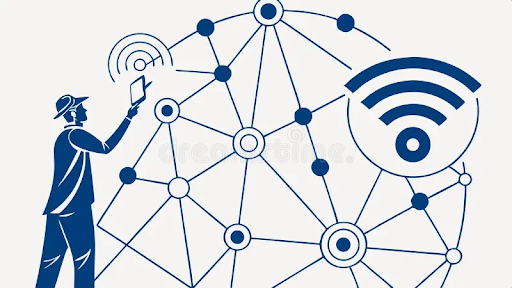The internet has become an ever-evolving space where trends, movements, and conversations form in real time. Central to this transformation are digital icons—personalities, avatars, or symbols that gain influence online. These icons not only generate content but also help shape opinions, mobilize communities, and drive digital culture in specific directions. As they rise in prominence, they become cultural touchstones, often defining how people interact, communicate, and even think online. Understanding how digital icons shape internet culture helps us grasp the dynamics of modern social interaction, influence, and online identity.
The Rise of the Digital Persona
In the early days of the internet, anonymity was king. People interacted behind screen names and faceless avatars, keeping personal identity separate from digital presence. However, as social media platforms grew, especially with the rise of Twitter, YouTube, and TikTok, digital personas began to develop unique voices and aesthetics. These online identities took on personalities, backstories, and consistent behavior patterns, making them recognizable and relatable.
What differentiates a digital icon from a regular user is the consistency and impact of their presence. They maintain engagement, provoke thought, entertain, or lead discourse in their niche. Some might be known for humor, others for activism or insightful commentary. Regardless of the theme, they leave a mark that transcends individual posts or videos.
Influence Beyond Follower Counts
While follower count is one measure of influence, digital icons often wield power in less obvious but more meaningful ways. Their content shapes discourse, sets trends, and becomes part of the collective online memory. Memes, phrases, and hashtags they create or popularize can go viral, influencing not just conversations but even real-world events.
Take, for instance, internet personalities who adopt satirical or humorous personas to critique political or social systems. These digital icons become voices for communities that may otherwise go unheard. Their posts resonate, are shared widely, and spark debates that ripple far beyond their own following. Their influence often stems from authenticity, relatability, or their ability to say what others are thinking but might be hesitant to express.
Niche Communities and Cultural Identity
The internet enables the formation of niche communities around shared interests or ideologies. Digital icons often emerge from these communities, serving as both figureheads and unifying forces. Their success relies heavily on understanding the language, humor, and values of their audience.
One such example is the rise of parody and satirical accounts in political discourse. A notable figure in this realm is the anonymous conservative commentator known for their sharp wit and loyal fanbase on catturd Twitter. This account exemplifies how digital icons can mobilize supporters, challenge narratives, and create distinct digital subcultures. The use of humor mixed with ideology provides a relatable and engaging way for followers to consume and spread content.
Digital icons like this don’t just reflect their communities; they often shape them. Through consistent messaging, inside jokes, and repeated themes, they help define the values and tone of the groups they represent. Over time, these digital spaces become cultural microcosms where language, norms, and humor evolve in unique ways.
The Blending of Online and Offline Impact
Digital icons have increasingly begun influencing offline behavior and traditional media. News networks cite their tweets, celebrities respond to their posts, and brands attempt to mimic their tone for marketing purposes. What starts as a meme or viral comment can spark protests, launch political movements, or influence public sentiment.
Consider how internet personalities can drive real-world action. Whether it’s raising funds, organizing events, or calling attention to specific causes, their online clout translates into tangible results. Digital icons often act faster and with greater impact than traditional institutions, leveraging their platforms for both humor and advocacy.
Moreover, the blending of online and offline worlds has changed how we perceive credibility and authority. People no longer look only to traditional experts for guidance. Instead, they turn to those with engaging and trustworthy online personas. These digital figures redefine influence by offering authenticity, transparency, and a sense of direct connection with their audience.
Challenges of Fame in a Digital World
Despite their impact, being a digital icon comes with challenges. Online fame is notoriously volatile, with reputations built and destroyed at unprecedented speeds. A single misstep, controversial opinion, or change in tone can alienate audiences or attract backlash.
Moreover, the pressure to constantly produce content and maintain relevance can be overwhelming. Many digital icons face burnout, privacy issues, or harassment. Their personas, while crafted for public engagement, often mask the emotional toll of maintaining a high-profile online identity.
Another complication is the blurring of truth and persona. Audiences may struggle to separate satire from sincerity, particularly when digital icons mix humor with serious commentary. While this can be a powerful tool for critique, it also risks misinterpretation or manipulation.
Conclusion
Digital icons are more than just online personalities; they are cultural architects shaping how we connect, communicate, and consume information. By influencing trends, building communities, and blending entertainment with insight, they redefine what it means to be influential in the digital age. As the internet continues to evolve, so too will the role of these icons—pushing boundaries, challenging norms, and continually reshaping the culture of the web.
Understanding their role offers a window into the broader dynamics of digital society, where influence is no longer confined to celebrities or institutions but can arise from any corner of the internet. The rise of digital icons underscores a fundamental shift: in today’s world, identity, voice, and impact are forged not just in person, but in pixels.

